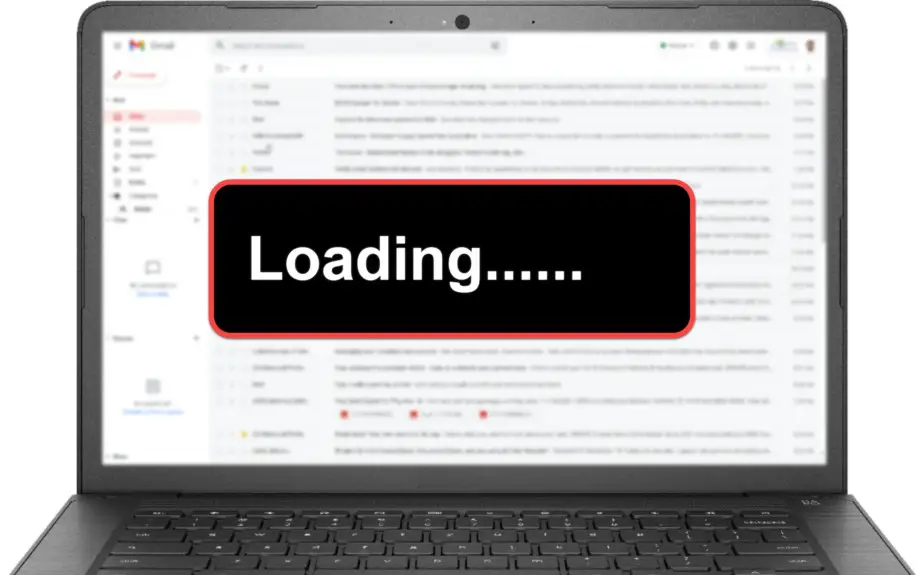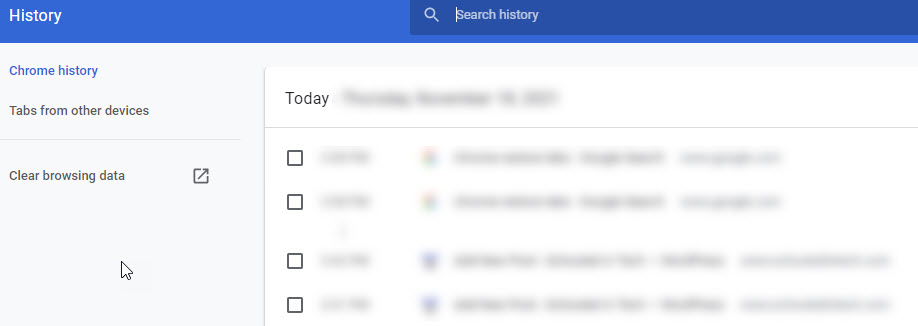Chromebooks are typically fantastic devices. They turn on quickly, aren’t bloated with software, and most of the time, are fast. However, with use over time, you may see a slow down in performance. Here are 4 free things you can do to get that speed back. Use them in combination.

Speed Up Chromebook by Rebooting
We’ll cover the simplest solution first. Rebooting has been a troubleshooting technique for Chromebooks and numerous devices for years and the truth is, it often works. A reboot clears out anything that might be utilizing your Chromebook processing power and memory. Like a good night’s sleep, it gives your Chromebook a fresh start.
If you are rebooting to improve speed, don’t restore tabs if prompted. This will just open up everything you had open prior to your reboot which will likely slow you back down again. If there is a website you want to reopen, but don’t remember the name or how to get there, check your browser history.

To open your history, press Ctrl + H. This will open a tab with all of the websites you have visited. Find the site that looks like the one you what to visit again and click on it. You can even view sites you have visited on other devices while using the same Google Account.
Whenever you are finished with a website, you should close the tab. This will free up memory for visiting other websites.
Speed Up Chromebook By Closing Tabs
Being able to open different websites in multiple tabs is fantastic. However, your Chromebook performance takes a hit for each of those tabs you have open.

If you start to notice your Chromebook slowing down, close some tabs. You can always revisit a site by viewing your history as I showed previously. You can also save page links to bookmarks by pressing the star button to the right of the URL.
Another way to save all your open tabs so you can revisit them later is with an extension like OneTab. It converts all of your tabs into a list of links you can visit later. I find this really helpful when planning a trip. I use it when looking up where I am going, flights, hotels, and things to do.
Turn Off Extensions to Speed Up Chromebook
If you’ve been using a Chromebook for a while you likely have installed at least a few extensions. If you are like me, you likely have dozens installed. Extensions are helpful or fun apps that help you do or view something in Chrome. There are productivity extensions, weather extensions, note-taking extensions, and tons of others. You can see and manage your extensions at chrome://extensions/. I cover my favorite note-taking app in my Teacher’s Guide to Getting Organized with Google Keep post.
While extensions are helpful in certain circumstances, it’s unlikely you need them all running at the same time. Each one you have running is using at least a little bit of your memory and some are using a lot of it. You should turn off any extension you don’t need. This can be a pain, but one of my favorite free extensions makes it easy. It’s called Extensity and it allows you to quickly turn individual extensions on and off. You can learn more about it in this quick video I made which shows you how it works.
Powerwash / Factory Reset Chromebook For A Fresh Start
Chromebooks save all your files and settings online. This means you can reset your Chromebook without losing anything. Resetting your Chromebook is also called Powerwashing and it is simple to do. Just follow the steps in my How To Powerwash (Factory Reset) a Chromebook post.
Powerwashing your Chromebook resets all device settings back to the factory and removes all profiles. It will still be running its current Chrome OS version. This will free up any local storage space that was being used by apps and downloads. Afterward, you can log onto the Chromebook with your Google credentials and you’ll have access to all of your files, bookmarks, and apps.
Speed Up a 2 GB Chromebook
For those of you with Chromebooks that have 2GB of RAM, there is only so much that can be done to speed up your Chromebook. Over the last few years, resellers have provided inexpensive Chromebooks and many of them had only 2GB of RAM. RAM is the memory for the device. For the most part, the more memory you have, the more you can do. That’s why I’ve always advised against buying a Chromebook with less than 4GB of RAM.
Now, your 2GB Chromebook is not trash. It will still surf the web, read your email, create a Google Doc, and watch videos. The thing to remember is, it’s not going to do all of those at the same time very well. For example, if you like to stream music while you work on your Chromebook, you might want to consider playing music on another device while working on large spreadsheets in Google Sheets.
I highly recommend you try out the tips above to get the most out of your Chromebook.

